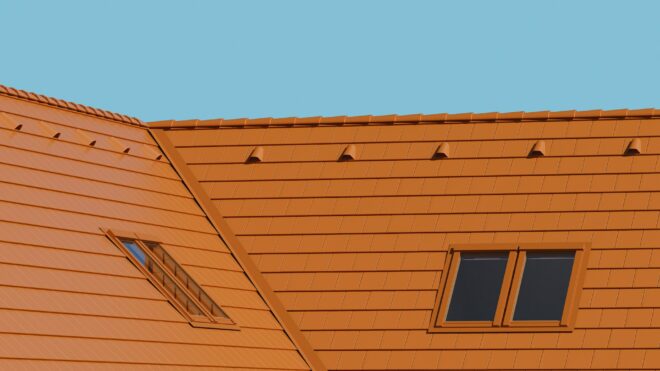Living in Southwest Florida, where hurricanes are a frequent reality, securing your home against severe weather is not just a precaution; it’s a necessity. One of the most critical measures homeowners can take is investing in hurricane-proof roofing. This type of roofing does more than just cover your home; it safeguards your belongings, protects your loved household members, and provides peace of mind amidst the unpredictability of storm seasons.
Hurricane-proof roofing involves specific materials and construction techniques designed to withstand the high winds and flying debris commonly associated with hurricanes. But it’s not only about choosing the right materials; it also emphasizes proper installation and ongoing maintenance to ensure maximum protection. By understanding the essential features and benefits of hurricane-proof roofing systems, you can make informed decisions that enhance your home’s resilience, reducing potential damage and keeping your insurance costs in check.
A key element in hurricane-proof roofing is the installation of a robust weather barrier, which plays a critical role in preventing water infiltration and reducing damage from severe storms. Weather barriers, such as underlayment and waterproof membranes, form an essential layer beneath the roofing material, providing extra protection against rain and wind. These barriers prevent water from seeping into the roof structure, which can lead to mold, rot, or further deterioration during a storm. Proper selection and installation of a high-quality weather barrier is a vital step in ensuring the longevity and durability of the roof.
Additionally, coatings and sealants are important for reinforcing the weather barrier’s effectiveness. These products offer an extra layer of protection against the elements by sealing seams and gaps, preventing water and wind from penetrating the roof. Coatings can also improve the roof’s overall energy efficiency, reflecting heat from the sun and keeping the interior cooler during hot weather.
In this guide, we’ll explore why a robust roofing system is indispensable in regions battered by storms and how you can implement effective solutions to keep your home secure. Every step, from selecting the right materials to regular roof maintenance, plays a pivotal role in fortifying your house against the fierce forces of nature.
Understanding the Risks: Why Hurricane-Proof Roofing is Essential in Southwest Florida
In Southwest Florida, the risk of hurricanes is not something we can afford to ignore. The fierce winds and relentless rain can wreak havoc on standard roofs, leading to severe damage that can jeopardize the entire structure of a home. That’s why hurricane-proof roofing isn’t just a luxury; it’s a critical safeguard for your investment and your safety. Every year, homes with inadequate roofing systems face the possibility of roof uplifts due to high winds, which can result in catastrophic outcomes for the property and the entire community.
Beyond the immediate danger posed during a storm, the aftermath often involves water damage that can lead to mold growth and weakened structures. For families, the financial strain of repairs and the emotional stress due to displacement can be overwhelming. It’s essential to understand that the cost of installing a hurricane-proof roof pales in comparison to the expenses and heartache of repairing a storm-ravaged home. By enhancing your roof’s resilience, you significantly lower the risks associated with hurricane season and protect your home’s value.
Key Features of Hurricane-Proof Roof Systems
A truly resilient hurricane-proof roof comprises several integrated features designed to withstand the unique challenges posed by extreme weather conditions. First and foremost, the material choice is critical. Options such as metal roofing, clay tiles, and specially designed asphalt shingles are popular due to their durability and ability to resist high winds. Each material has specific traits that contribute to its effectiveness in hurricane-prone areas, such as weight, wind resistance, and impact resistance.
In addition to robust materials, the design and construction of the roof play pivotal roles. Features like a hip roof design with four sloping sides, rather than a flat or gable roof, offer better wind deflection, making it harder for strong winds to gain grip. Furthermore, secure installation methods such as hurricane straps or clips add another layer of stability, firmly anchoring the roof to the structure’s walls. These systems are crucial in preventing the roof from detaching from the house during a hurricane, effectively minimizing the potential for significant damage. Equipping your home with a roof that includes these features is an investment in long-term security and peace of mind.
Step-by-Step Guide to Installing Hurricane-Proof Roofing
Installing a hurricane-proof roof is a detailed process that we take seriously to ensure your home’s safety during the toughest storms. Firstly, we choose the right materials. This typically involves selecting heavy-duty roofing materials known for their durability and resistance to high winds, such as metal roofing or specially designed shingles that comply with local building codes for wind resistance. Each material is chosen not only for its ability to withstand the weather but also to complement the style of your home.
Next, we focus on the installation process, which is crucial for ensuring the roof’s effectiveness. We start with a solid decking base, often reinforced for added stability. Proper underlayment is then applied—a critical step for waterproofing and providing an additional layer of protection. Special attention is given to the sealing and flashing around edges, valleys, and penetrations to prevent any potential leaks. We ensure that all materials are securely fastened, using nails and fasteners that are appropriate for high-wind areas. A thorough inspection follows to confirm that everything is perfectly installed and compliant with industry standards.
Regular Maintenance Tips to Ensure Roof Integrity During Storms
Regular maintenance is key to ensuring that your hurricane-proof roof remains effective year after year. We recommend a schedule of bi-annual inspections to identify and resolve small issues before they turn into larger problems, especially after major weather events. These inspections involve checking for loose or damaged shingles, securing fasteners, and ensuring that flashing and seals remain intact.
Another important aspect of maintenance is keeping the roof and gutters clean. Debris, such as leaves and branches, can accumulate and create blockages that prevent proper water drainage, potentially leading to water damage. It’s also wise to trim any trees close to your house to reduce the risk of branches falling onto the roof during a storm. By staying proactive about roof maintenance, you can extend the lifespan of your roofing system and maximize its performance during the hurricane season.
Conclusion
Our commitment is to ensure that every homeowner in Southwest Florida has a hurricane-proof roof that protects and enhances the value of their property. From choosing the right materials and employing meticulous installation techniques to conducting regular maintenance checks, we are here to guide you every step of the way. Ensuring that your roof can withstand the harsh weather conditions typical in our region is about safety and peace of mind.
Don’t wait for the next storm to test the limits of your Fort Myers roofing system. Contact Fair and Square Roofing today. Let’s discuss how we can fortify your home with a reliable, hurricane-resistant roof that withstands time and weather.

